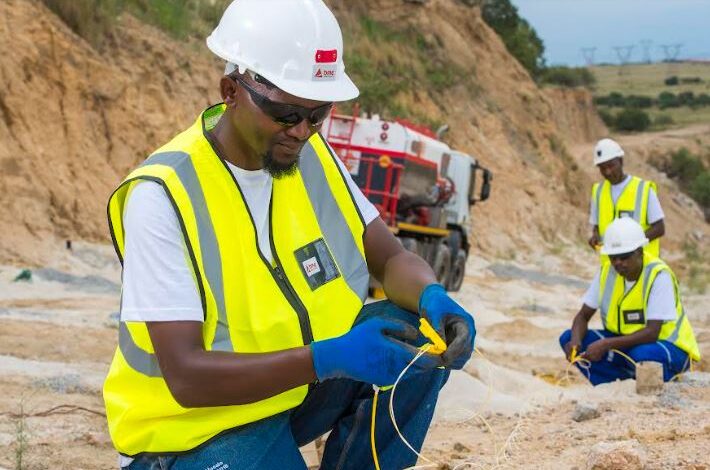Bedeschi, leader in bulk material handling for more than a century, has outstanding experience in realizing complete bulk solutions for the mining sector.
The company can handle any kind of raw materials and additives and provides the design, engineering and manufacturing of integrated solutions covering every company’s needs from quarry extraction to storage, including crushing units, apron feeders, stackers and reclaimers, combined bucket wheel, shiploaders, belt conveyors and pipe conveyors. In particular, in the mining sector, Bedeschi can also offer a wide variety of apron feeders, normal-duty crushers, heavy-duty crushers, stationary units, semi-mobile units and mobile units.
In the past year Bedeschi has completed the supply of a tailor-made plant in Takoradi Port in Ghana boosting its production and revolutionizing the management of the whole terminal.
In 2019, the Ghana Ports and Harbors Authority (GPHA) started the upgrading and mechanization of the Takoradi Bulk Jetty Terminal to significantly increase the throughput of bulk minerals for both export and import. In 2021, Bedeschi was awarded the supply. The scope of works included the design, procurement, manufacturing, supply, construction, supervision to installation, testing and commissioning and staff training for the Cargo Handling Equipment in the Port of Takoradi.
The scope of the project was the supply of handling equipment and services for bauxite and manganese in export and clinker and other materials that are imported.
Bedeschi supplied:
Belt conveyor systems for a total length of av. 3 km;
Two shiploaders A-Frame type mod. 50/1400;
One eco-hopper.
The 2 shiploaders and the eco-hopper were delivered fully erected from the company shipyard directly to the client jetty with a dedicated heavy lift vessel after the Cold Test, to reduce site works and allow the end user to start the operations in a very short time once the machines reached the site.
Delivery of full-erected equipment
The project involves state-of-the-art equipment in terms of environmental standards (dust collection and de-dusting system specifically designed for this application). All the conveyors are closed, including the section where tippers and eco-hoppers are operating, reducing drastically dust emissions.
During the engineering phase, the company designed the machines to facilitate the operation and meet the highest health and safety standards.
The scope involved also, the provision of a computerized control system. Eventually, the machines, managed by VFD, are designed to increase the handling capacity of the bulk jetty terminal by 25%.
With Bedeschi’s proven experience and know-how, the client has complete support on the project execution, from the design to the commissioning.
Before the mechanization of the dry bulk handling, loading was carried out at the new jetty, via barges from the old Clinker jetty as well as at berth no. 2 of the old jetty. Berth 2 provided the possibility of mechanized manganese loading of vessel up to 25,000 DWT (Handy size Class). A Jetty at the north also provided the possibility of berthing vessels up to 100,000 DWT (Capsize Class) but it was not mechanized and used vessels’ own gears for berth operation and trucks for the horizontal transport between berth and stockpiles.
The historical Bulk Jetty Terminal had only the possibility to deliver the minerals from trucks to the vessels only by grab cranes, with limitations on the operational performances.
The same was for the import of clinker and other materials, with delivery directly to the trucks.
Additionally, the layout was prone to serious dust and noise pollution from loading and stevedoring activities.
The terminal before Bedeschi supply
Photo showing original plan of Bulk Handling Jetty
Area A – the new bulk jetty with the following major characteristics:
800 m Quay Wall at -16 m CD depth, divided into 3 berths of equal length, one berth for Clinker, one for Bauxite and one for Manganese ore.
Area B – Bauxite stockpile area.
Area C – Manganese Stockpile area.
The design, procurement, shipping, installation, and commissioning of the equipment covered a period of 18 months. This was a major achievement despite COVID-19 related challenges.
Belts Conveyor under construction
Upon completion of the installation of the equipment, in December 2022, the President of Ghana, his excellence Nana Addo Danquah Akuffo-Addo, participated in the Sod-Cutting ceremony with other dignitaries to earmark this ambitious effort to expand and boost the export of bauxite and manganese and import of clinker to support the industrialization of Ghana.
Opening Ceremony with the President of Ghana
Manganese storge loading hopper
Loading capacity for Manganese export now 2,000M T/H
Loading capacity for Bauxite export now 2,000M T/H
Loading capacity for clinker import now 1,900M T/H
Aerial view of the terminal before and after the supply of the conveyor lines
The Takoradi Project is a clear example of how Bedeschi can offer tailor-made solutions to meet and enhance clients’ needs providing the best solutions possible focusing on environmental protection, energy efficiency and pollution prevention.















